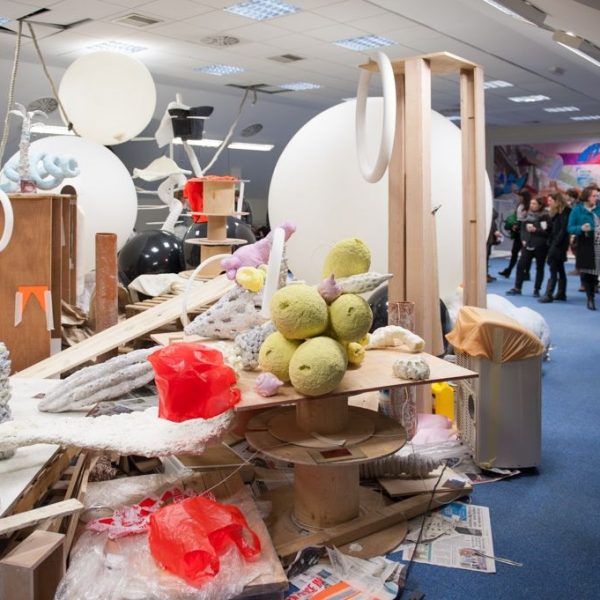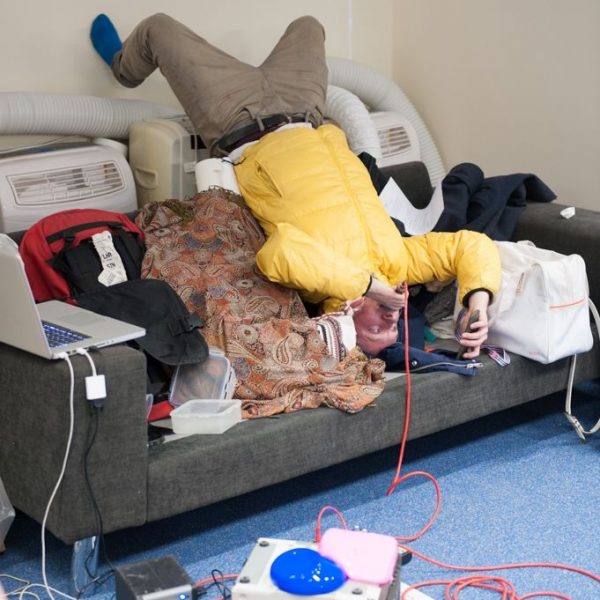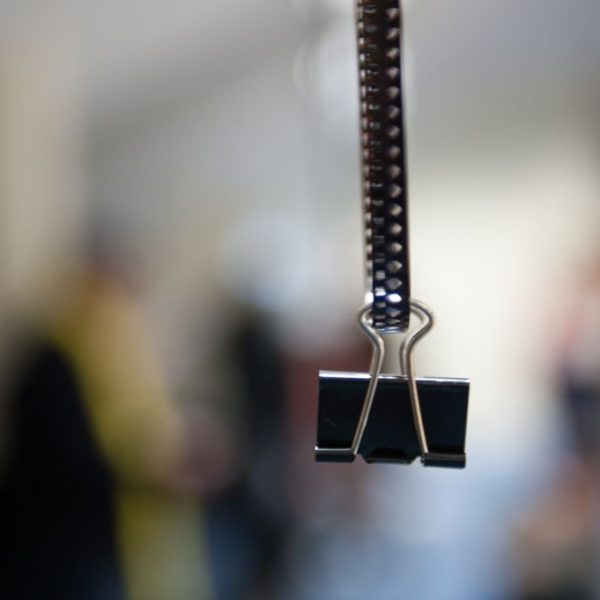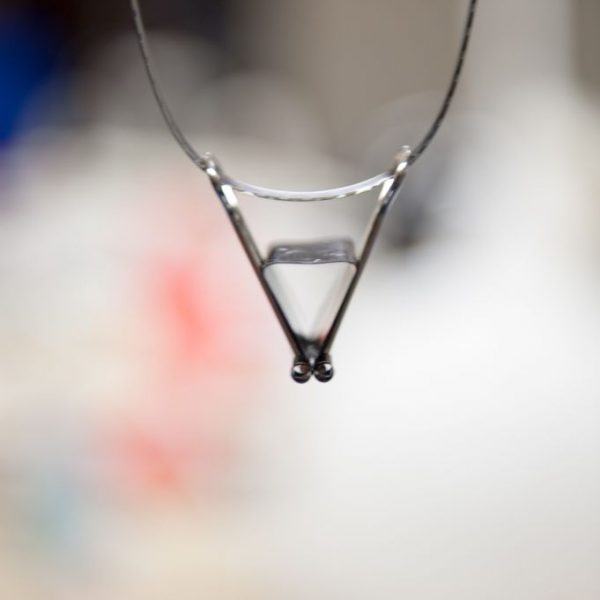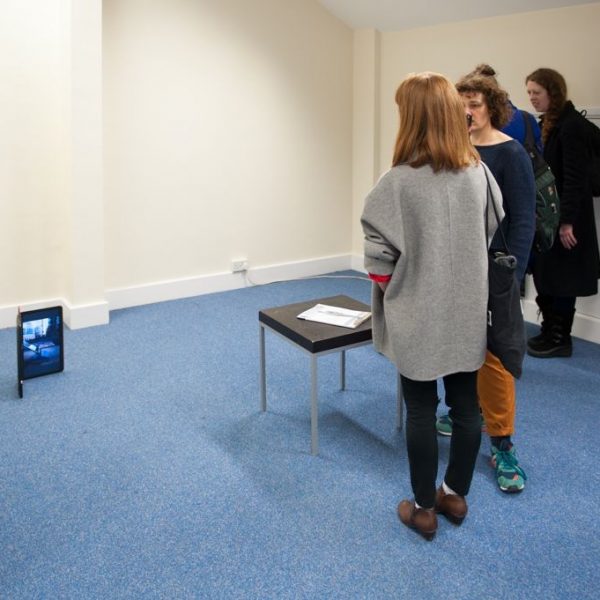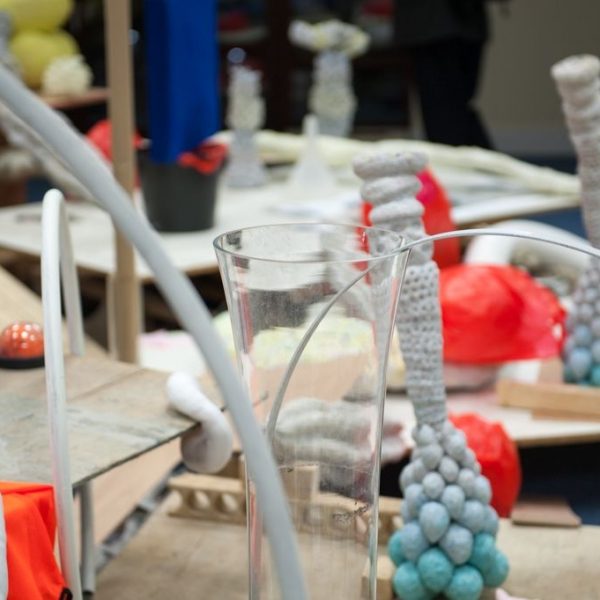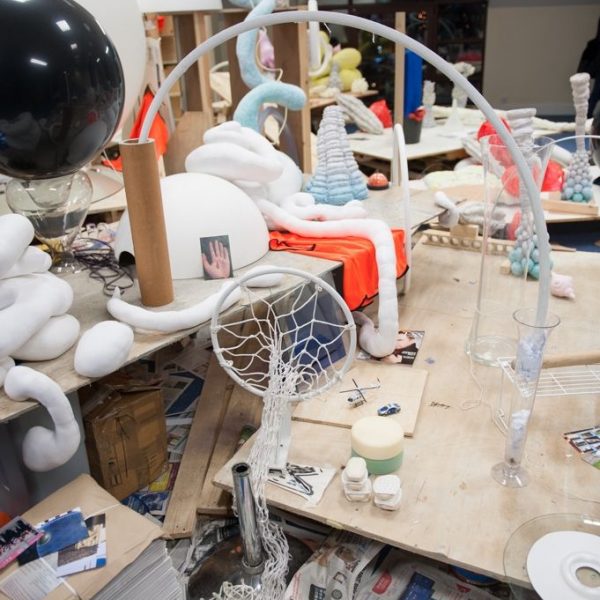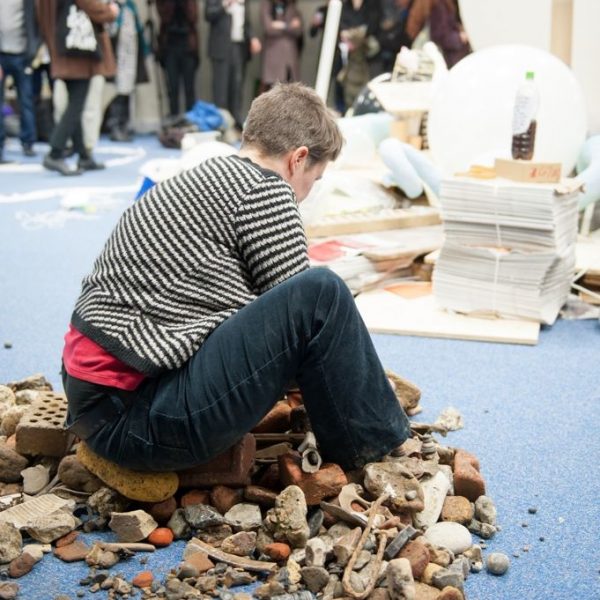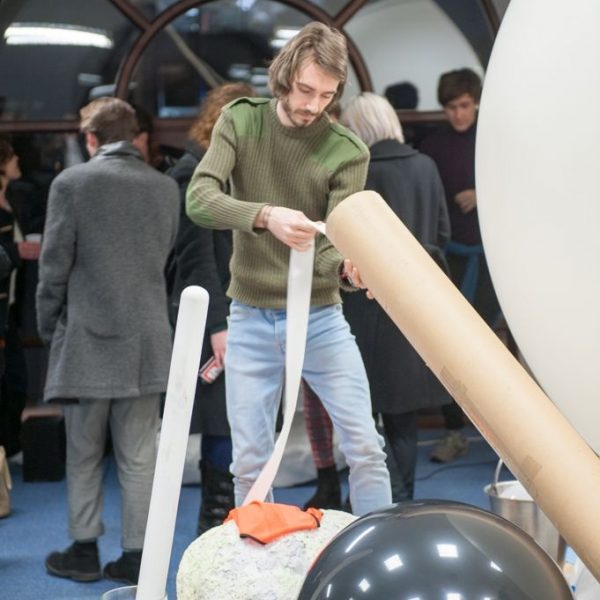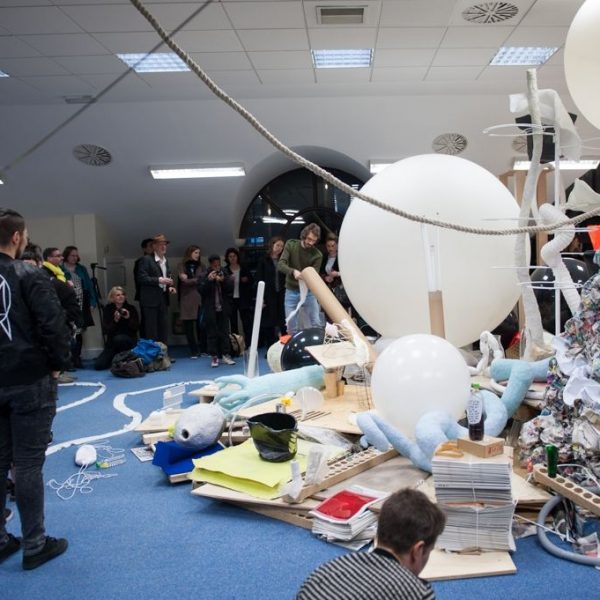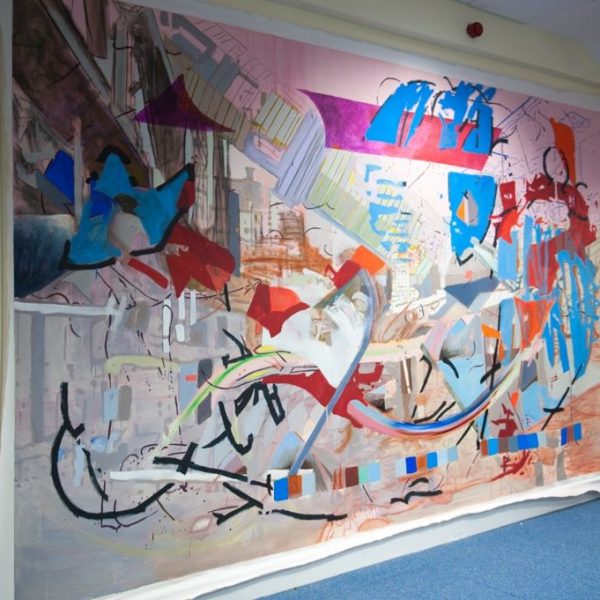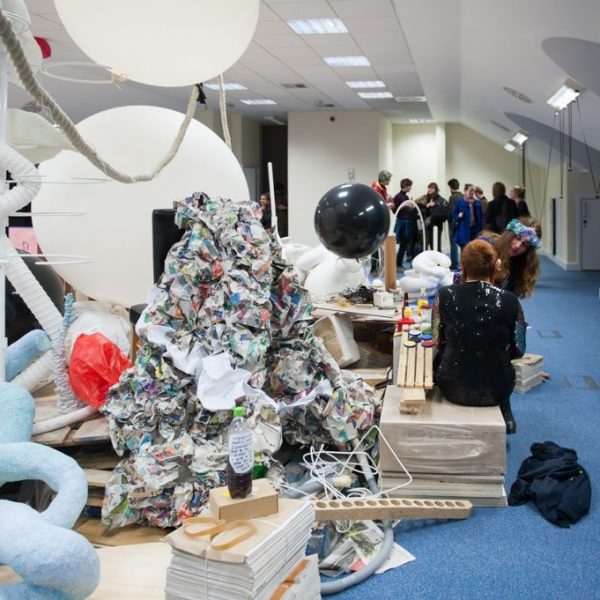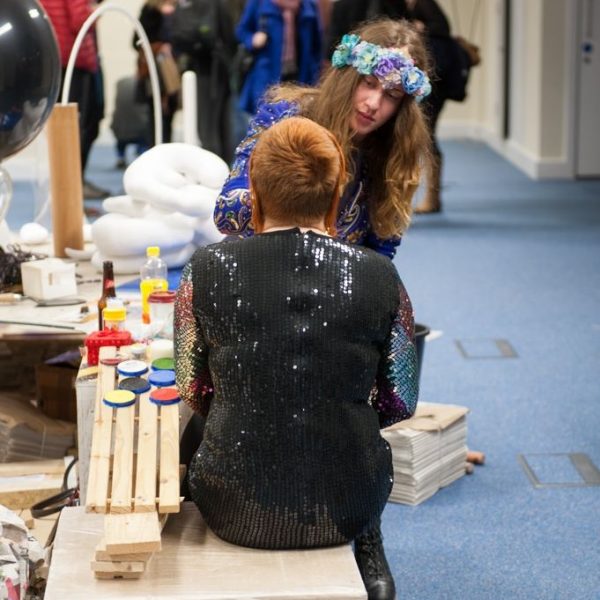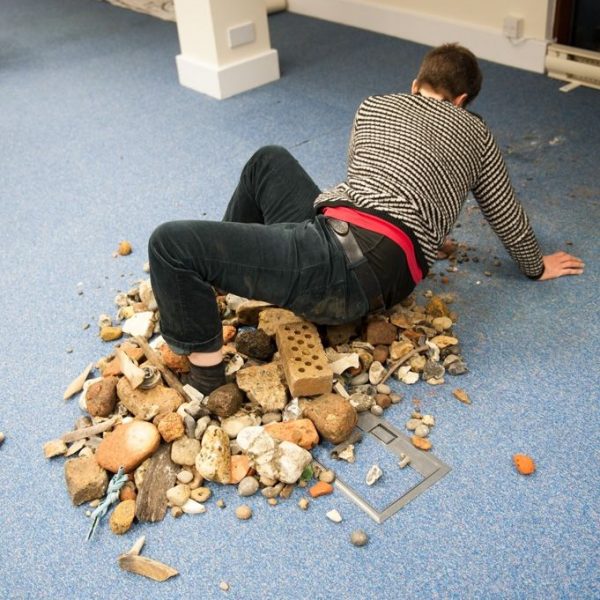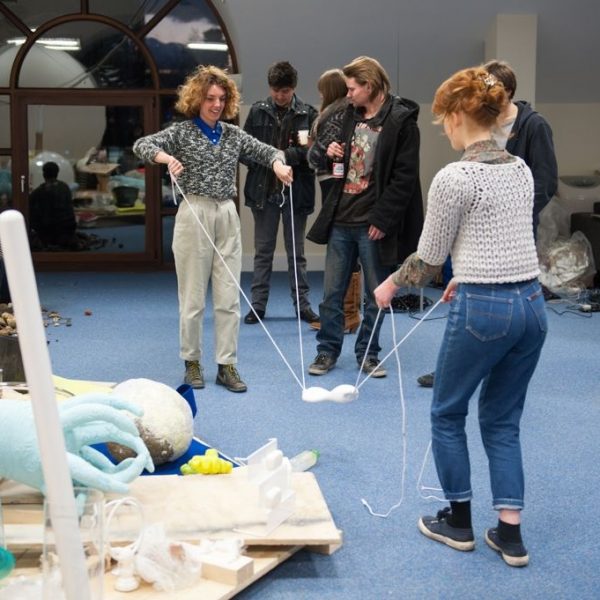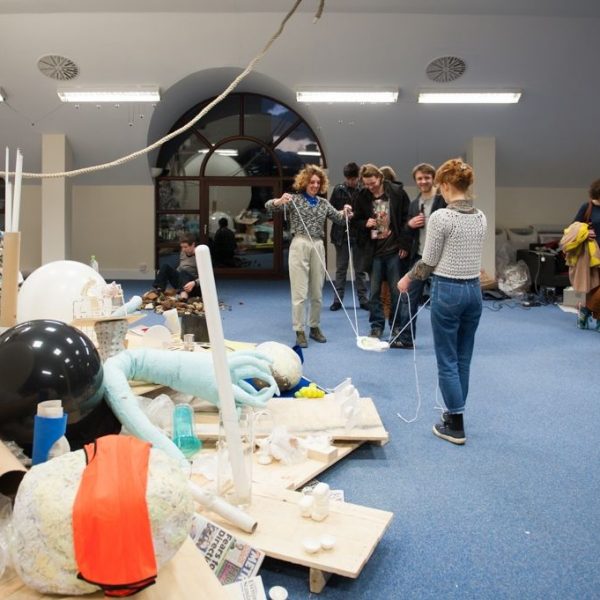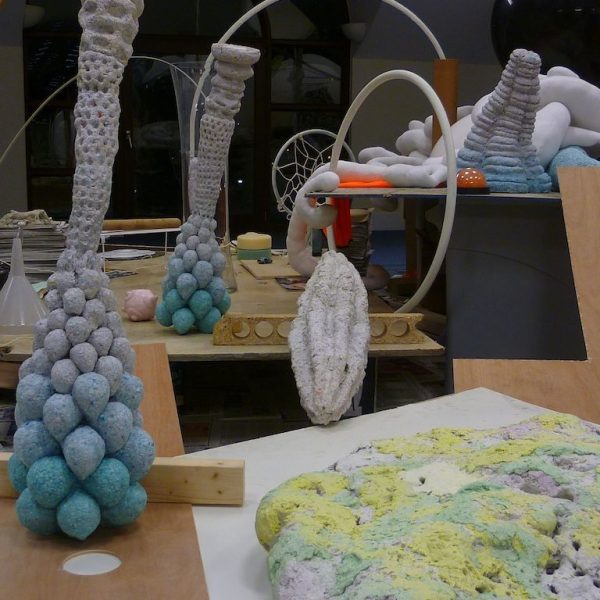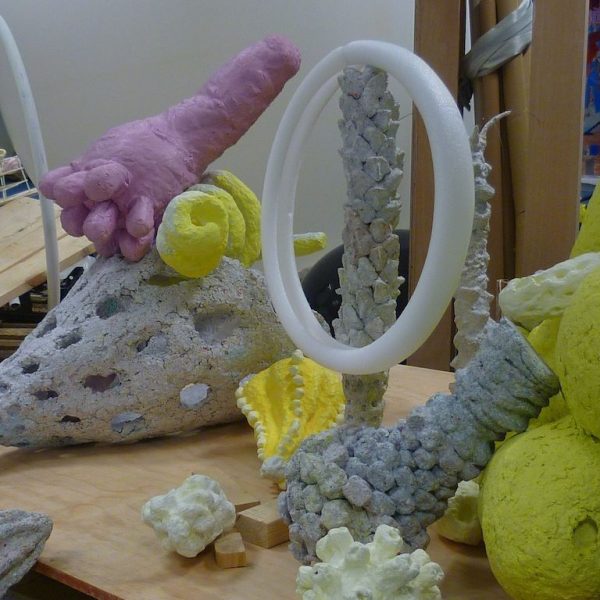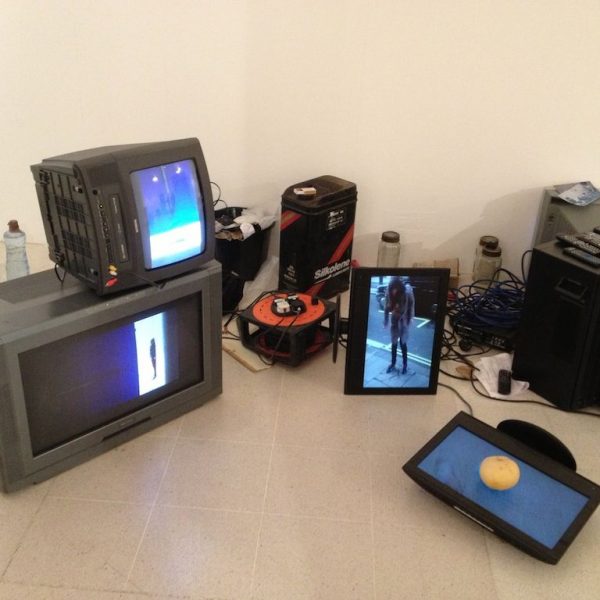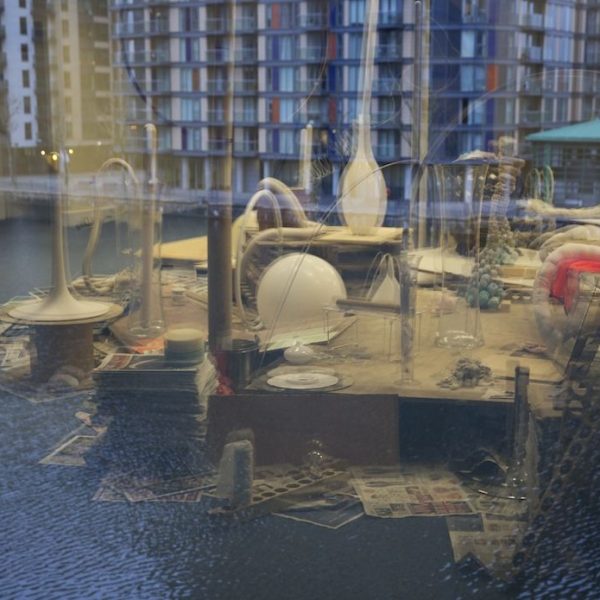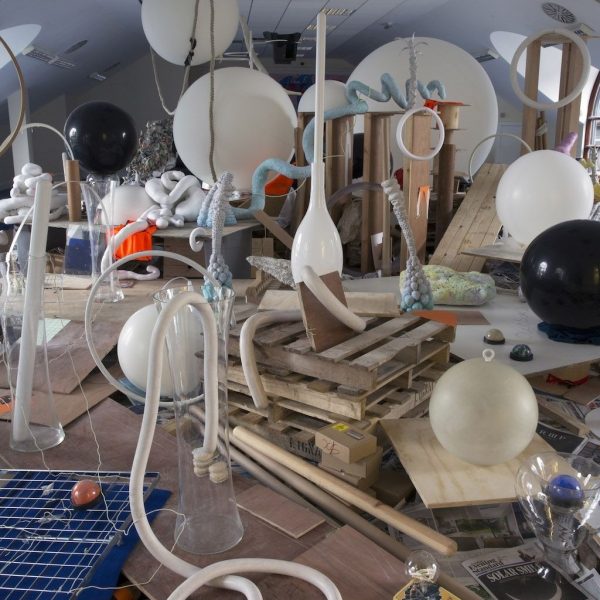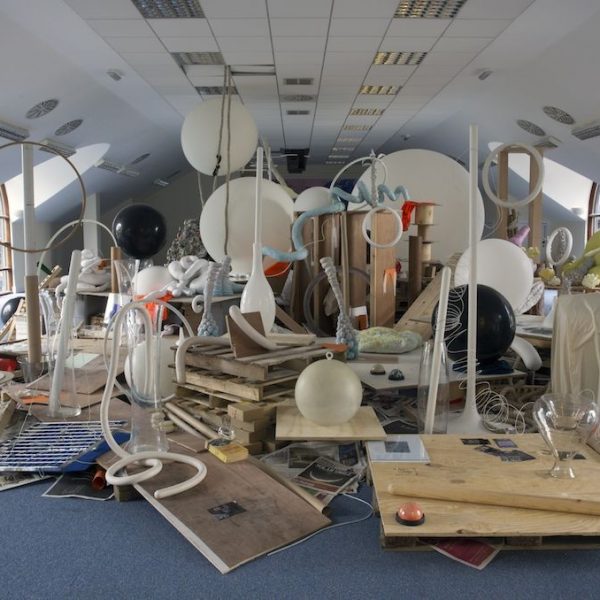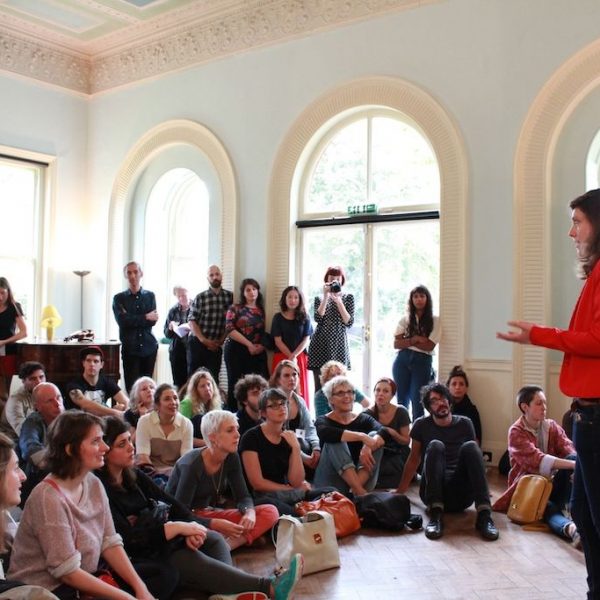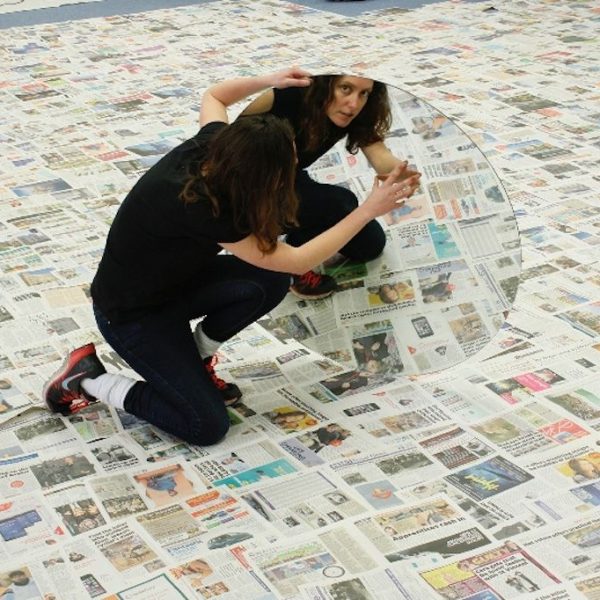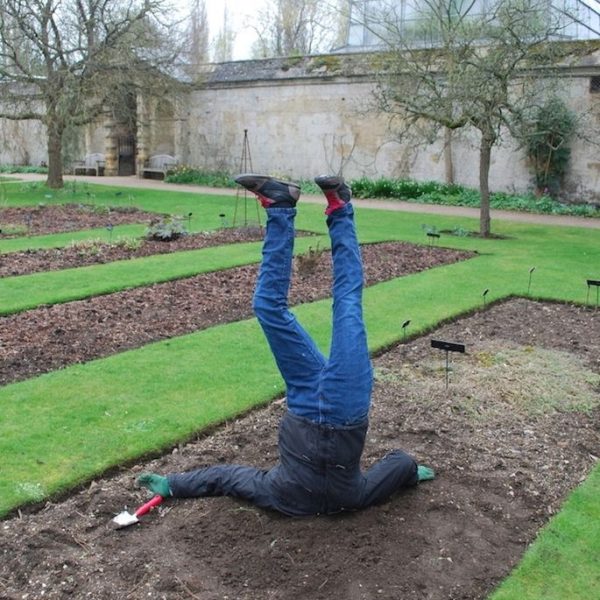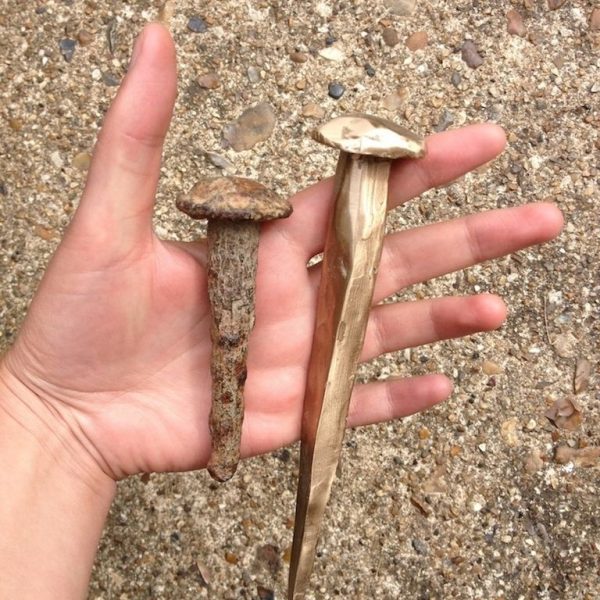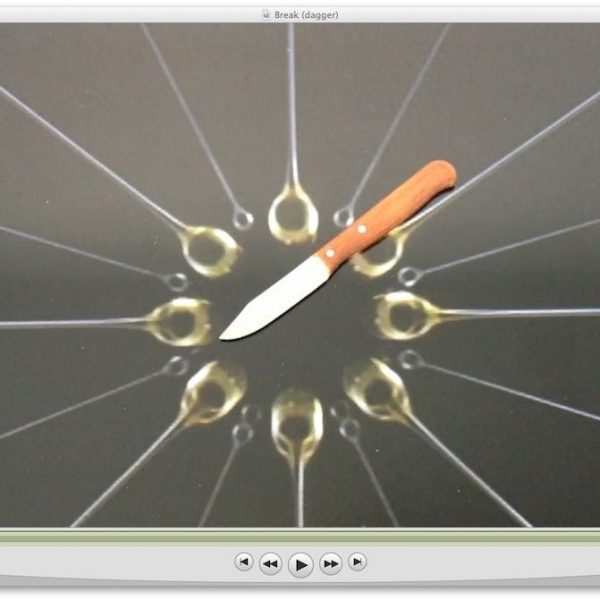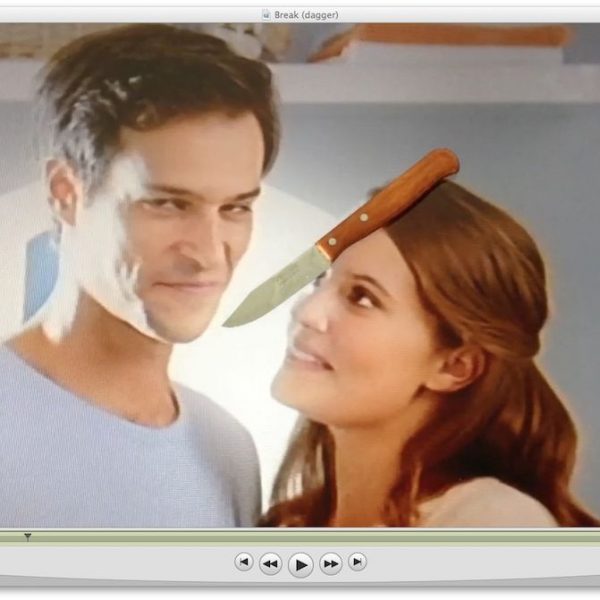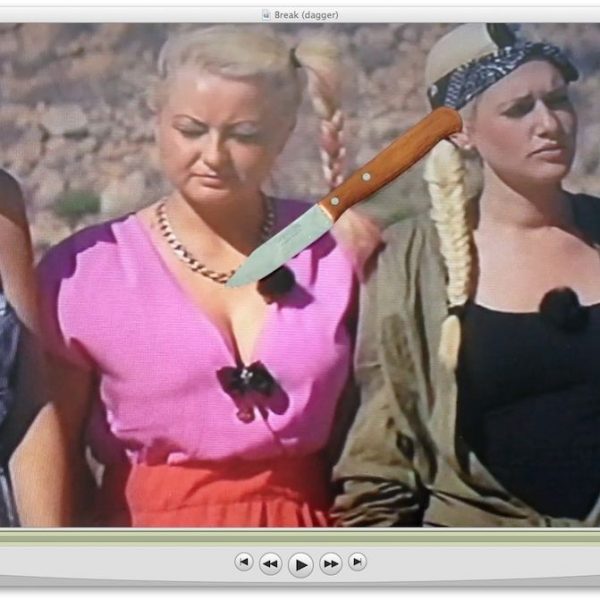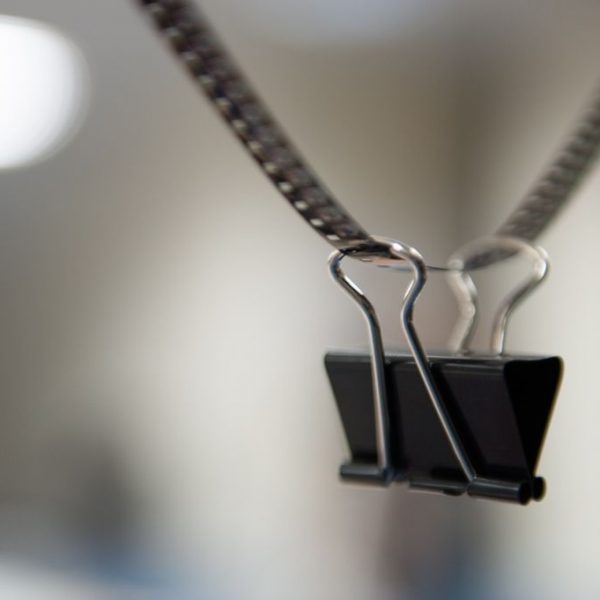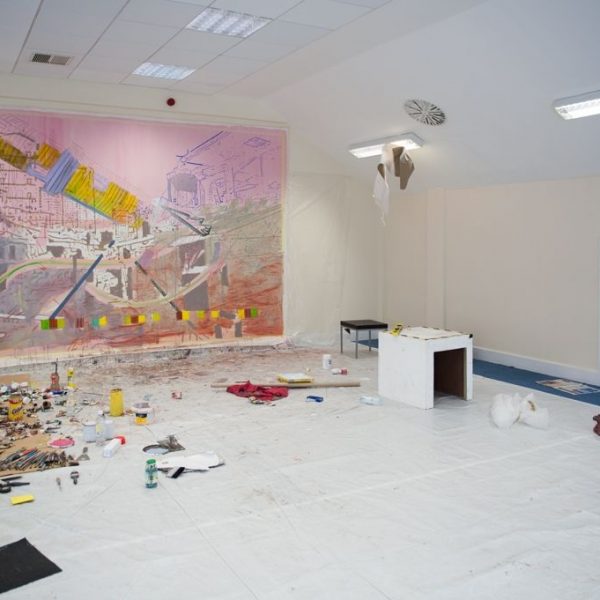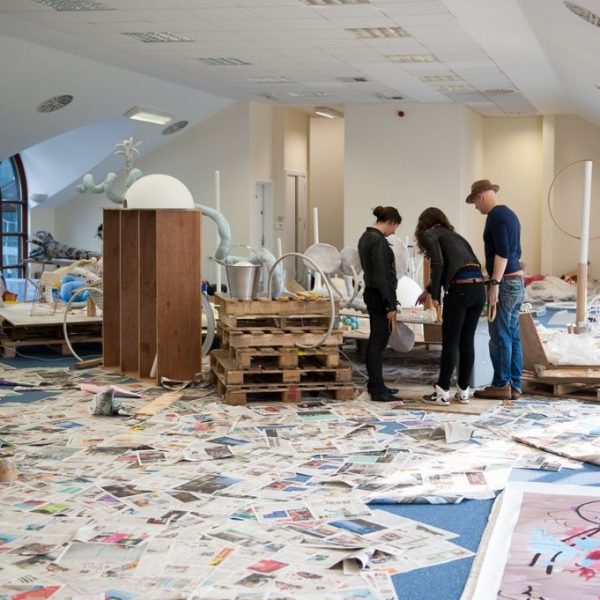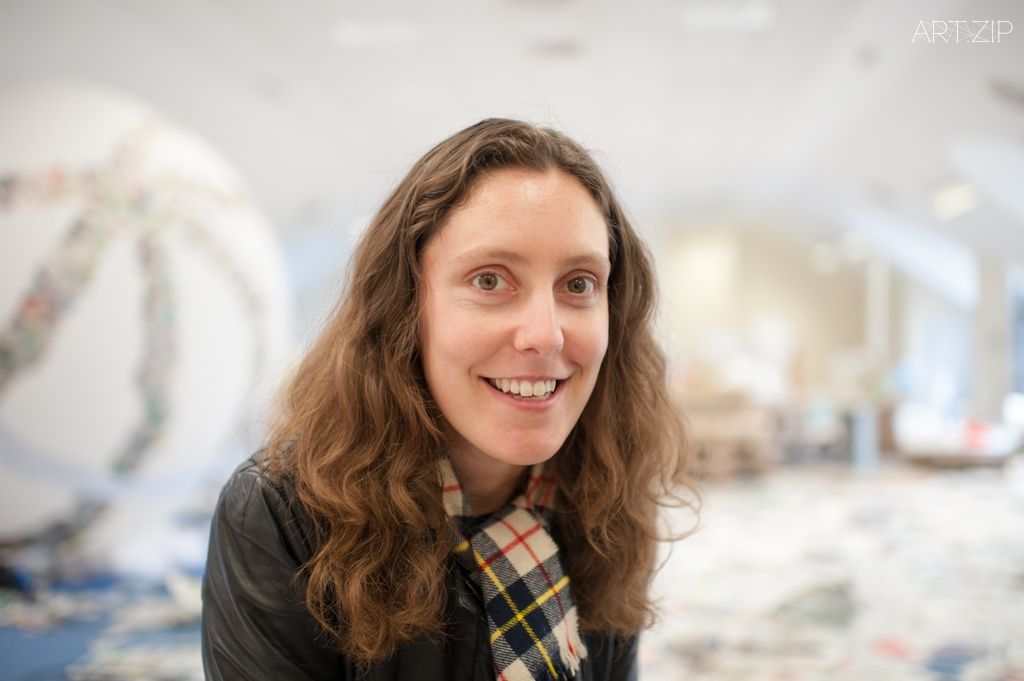
Louise Ashcroft, Artist and Founder of Floating Island Gallery
浮島畫廊創始人,藝術家——路易絲·阿什克羅夫特
TEXT BY 撰文 x LOUISE ASHCROFT 路易絲·阿什克羅夫特
EDITED BY 編輯 x MICHELLE YU 余小悅
TRANSLATED BY 翻譯 x QIWEN KE 柯淇雯
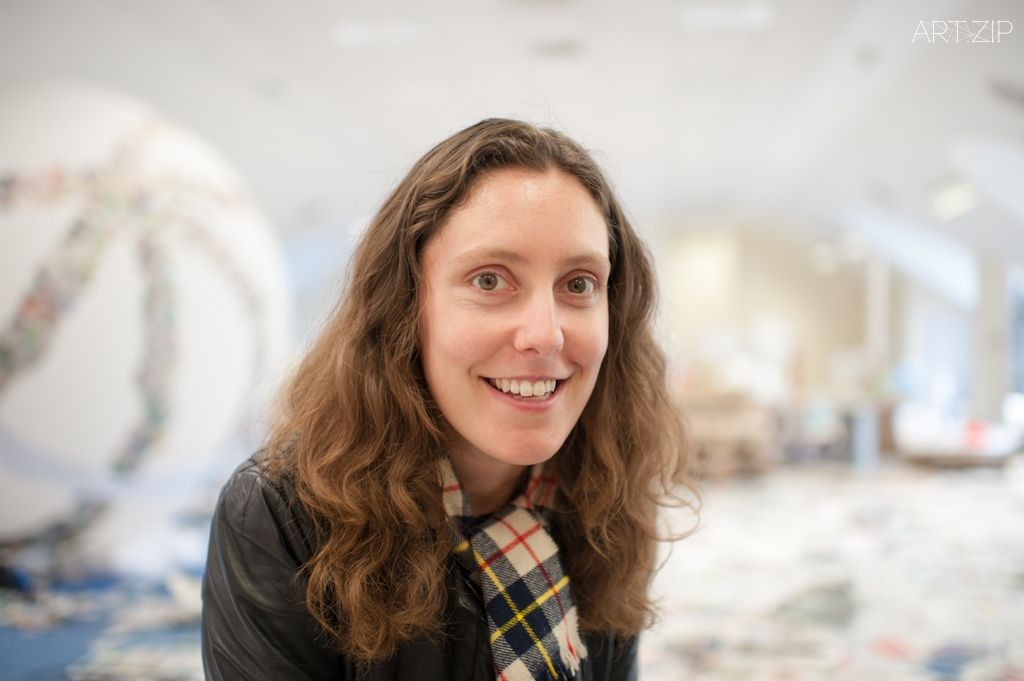 Born in Bradford, West Yorkshire 1983. Lives and works in London. Graduated from the Ruskin School of Art (Oxford University) in 2004 and Birkbeck (University of London) in 2008, Ashcroft also studied Sculpture at The Royal College of Art (London) in 2012-13 and is co-founder of the alternative art school AltMFA. An artist herself, Aschcroft curates exhibitions for Departure Foundation and runs her own gallery Floating Island. She organizes and initiates a variety of group show, educational activities, collaborative projects and events, such as ‘Unperforming’: an ongoing series of energetic performance events featuring various artists(about 25 per event).
Born in Bradford, West Yorkshire 1983. Lives and works in London. Graduated from the Ruskin School of Art (Oxford University) in 2004 and Birkbeck (University of London) in 2008, Ashcroft also studied Sculpture at The Royal College of Art (London) in 2012-13 and is co-founder of the alternative art school AltMFA. An artist herself, Aschcroft curates exhibitions for Departure Foundation and runs her own gallery Floating Island. She organizes and initiates a variety of group show, educational activities, collaborative projects and events, such as ‘Unperforming’: an ongoing series of energetic performance events featuring various artists(about 25 per event).
出生於西約克夏布蘭弗的路易斯·阿什克羅夫特是常駐倫敦的藝術家。畢業於牛津大學拉斯金藝術學院(Ruskin School of Art, Oxford Universiy)以及倫敦大學貝克學院(Birbeck, University of London),阿什克羅夫特也曾在皇家藝術學院學習雕塑,其後創辦了另類碩士課程(AltMFA)。阿什克羅夫特不但進行藝術創作,也為啓程基金會(Departure Foundation)策展,同時運營著自己的畫廊——浮島畫廊。她策劃並發起過多次群展、教育活動、協作項目及活動,其中備受關注的有《非表演(Unperforming)》——一個在不斷進行中的藝術現場系列活動,每次合作參與的藝術家有25位之多。
Floating Island—Collective studio, shape-shifting gallery
Floating Island is an artist-led gallery which I founded in April 2014. We occupy an ongoing series of temporary spaces according to the needs of each project, all of which have so far been at Harbour Exchange, a waterfront development near Canary Wharf. The aim of the organization is to catalyze collaboration, conversation and experimentation by creating a shared environment where selected artists in residence can make new work and exhibit together. Currently, there are fourteen artists in residence who have access to a large shared studio for two months, which will culminate in an immersive, shape-shifting exhibition with performances that will transform the space throughout the opening event. Some of the artists such as Jennifer Taylor, Elly Thomas, Sarah Pettitt and Robert Rivers, are making playful, abstract work focusing on form, object, deconstructed imagery, and assemblage; others like myself, Fritha Jenkins, Freya Gabie and Claire Nichols, are making site-orientated projects that refer to the cultural history of the docklands and its surrounding financial district. What unites the work is the importance of metaphor and gesture, which is why I have chosen to title the exhibition ‘Sketchy Remarks’ (quoting Noam Chomsky in ‘On Anarchism’, when he accepts the impossibility of a fixed conclusion).
‘Unperforming’ Performance
I am personally very interested in liveness and performance, so Floating Island exhibitions are often accompanied by an event I curate called ‘Unperforming’ which features many short, risk-taking live works erupting throughout the space. The tone of the event is often humorous, wild and shambolic; nobody really knows quite what is going to happen. I act as presenter, using a frying pan as a gong, telling stories and poems in-between acts. Recent events have been wonderful: The collective BBKP made an impossible-looking boat using chopsticks and cling film, then boarded it and sailed it around the dock; Hannah Jones sang opera about her iPhone; Lily Johnson enacted a surreal, wedding-like ceremony on the balcony with sculptural costumes and shaving foam; Jennifer Taylor floated a giant weather-balloon on the water; Neela Basu made an edible text piece written on slices of cheese; Aaron Williamson performed an OCD parody of internet ‘how to’ videos; Fritha Jenkins froze blocks of the River Thames and let them melt; Cradeaux Alexander presented a scene from his new play; Renata Bandeira hired a male and female model who stripped for us in reverse; Marcus Orlandi performed slapstick live sculptures involving flour, boxing and falling from a ladder; Rebecca Glover showed us her anatomical diagrams of the docklands; and Rosa Farber scripted viewers’ conversations. My own work is influenced by Dada, Situationism, happenings and stand-up comedy, so I am attracted to artists whose work has similar touchstones.
Free For All
It’s important to me that we try out new ways of relating to the audience and that the space can be used as a practice-based research tool for questioning the exhibition-making process. Most people come to see our shows by attending one of our events, which are increasingly crowded with familiar and new faces, and which catalyze a very supportive, joyful sense of community. We also try to get local people involved (a process which is often led by the work itself), for example, the collective Office of Public Ritual played reggae and set-up a lunch-hour cake stall in the street as a way of making conversation with local office workers who were invited to commission rituals designed by them.
I think that the most crucial condition for making great art is freedom, so my curatorial role is simply to plan a structure and concept for a show as a starting point, then provide a space and gather an audience; the rest of the time I am one of the artists.
Making Art, Making Friends
The artist-led approach is fundamental to the success of my projects. I set up Floating Island Gallery after five years of working for the arts charity Departure Foundation, which supports and promotes artists by providing them with free studios and by curating exhibitions, events and prizes showcasing new work. We had access to a lot of warehouses and offices (which were empty because of the recession) and we transformed them into galleries and free workspace. At Departure Foundation, I exhibited in many of the shows I organized – we wanted to create a movement and peer-group, so it was conducive that my own position was that of an artist. It was an exciting time – I spent a lot of it hanging around in vast warehouse spaces, making art and making friends. Literally hundreds of thousands of square feet became our playground – it was a sculptor’s dream. Empty offices and industrial buildings continue to have far greater appeal to me than conventional galleries, which I find can lead to the work being ‘art about art’. I did an MA in cultural studies, and I’m a bit ADHD, so I get anxious in white cubes and am much more interested in the drama of being in real, non-gallery sites.
While working for Departure Foundation I made connections all over Britain, having simultaneously run projects, spaces and studios in the North East, Yorkshire and Birmingham and London. I met so many brilliant artists. We selected artists whose practices got us excited, rather than choosing finished works. I learned quickly that when a group of artists have access to the exhibition venue for a couple of months before the show, making work on site, the space sort of curates itself organically in a much more cohesive way than other curatorial methods allow. It’s like permaculture as opposed to industrial farming. In many ways, the spaces I initiated were more like the collective studio space in an art school than a gallery.
From Oxford To London
I never wanted to leave art school. My BA was at The Ruskin (a small, ambitious school which is part of Oxford University). It was nurturing and full of activity. Even while I was there, I realized that it was a massive privilege being taught by incredibly inspiring tutors, including Michael Archer, Brian Catling and Richard Wentworth. The course ended with a month-long group residency in Morocco, which was organized by the art dealer Anne Berthoud, after which I moved to London with my course mates. We were all very driven and thought that our degrees were a passport to success, but instead faced the reality of trying to survive as artists in a big, expensive city that we knew nothing about. After a string of dead-end sales jobs and visits to Tottenham Hale Job Centre, my friend Neela Basu got me a fabricator position at Damien Hirst’s butterfly collage studio (she worked in his photo-realist painting studio). The next few years were great fuel, because lots of extraordinary young artists also worked there and we became a close group of friends. The nature of the work meant that we had a lot of time to chat together and share ideas about what we were making in our own practices and to organize exhibitions together, one of which was a wild event called ‘Wrecking Ball’ in a warehouse that was about to be demolished. We got invited to lots of art world parties and even went to LA for the opening of a huge Hirst exhibition at Gagosian Gallery. After a while I realized that the job wouldn’t last forever and that my main transferrable skill had become ‘picking the wings off butterflies and sticking them onto canvas’, which was problematic, so I studied for an MA in Cultural and Critical Studies at night school and then got the job at Departure Gallery (which later developed into Departure Foundation) – a new organization founded by two chartered surveyors Robert Wort and Giles Andrews who wanted to help emerging artists by providing them with free space and resources.
The few first shows I organized at Departure (in 2009-10) were in a series of warehouses in Heathrow and featured works by some really extraordinary up-and-coming artists including Edward Fornieles, Stewart Gough, Ilona Sagar, The Lloyd Corporation, Doug Jones, Helene Kazan, Paul Eachus, Blue Curry, Helen Barff and Charlesworth, Lewandowski & Mann. Literally thousands of people attended the openings, despite their distance from central London. One of the shows, Rhizomatic, involved over 200 artists occupying 64,000 square feet of space (using a ‘six degrees of separation’ concept as a way of selecting artists based on the artists we had already worked with), which effectively physicalized our creative network and introduced it to itself.
Alternative Gallery, Alternative School
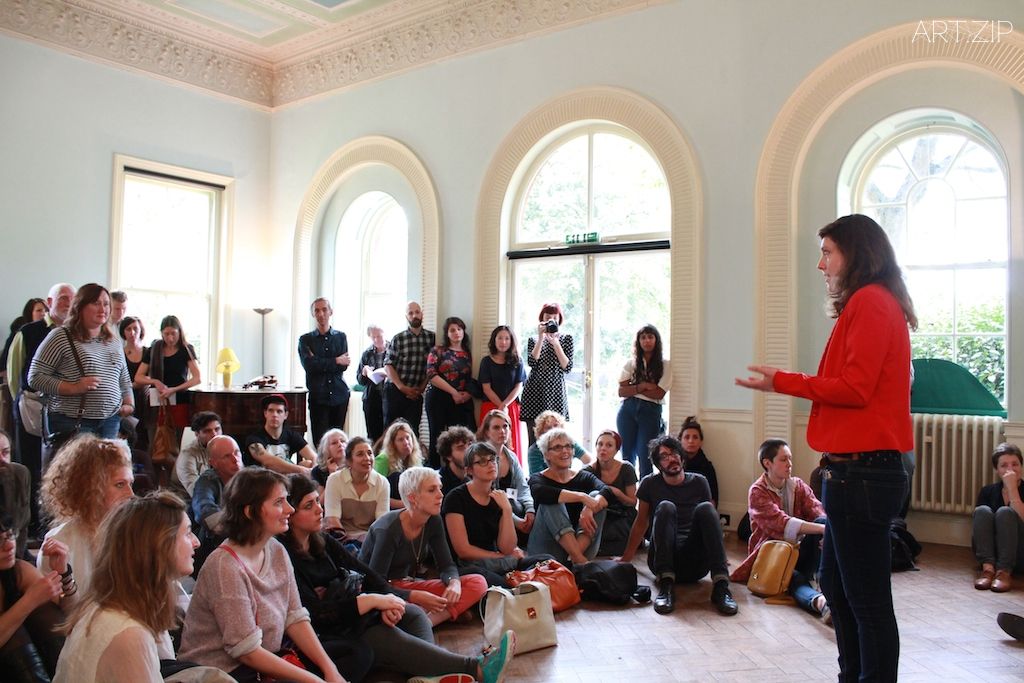 The opportunity to set up Floating Island Gallery came about through connections with a space I had used while working for Departure. I had co-curated the end of year exhibition for Goldsmiths College’s ‘Research Architecture’ MA there. It was a magnificent waterfront premises, sandwiched between the futuristic, corporate skyscrapers of Canary Wharf and the arty but then still un-gentrified streets of South East London. The project ended, but in 2014 I had the opportunity to lease this space and neighbouring properties independently at an affordable rate, so I decided to set up a new gallery.
The opportunity to set up Floating Island Gallery came about through connections with a space I had used while working for Departure. I had co-curated the end of year exhibition for Goldsmiths College’s ‘Research Architecture’ MA there. It was a magnificent waterfront premises, sandwiched between the futuristic, corporate skyscrapers of Canary Wharf and the arty but then still un-gentrified streets of South East London. The project ended, but in 2014 I had the opportunity to lease this space and neighbouring properties independently at an affordable rate, so I decided to set up a new gallery.
The name Floating Island had several associations for me: Robert Smithson’s piece in which a manmade island is towed by boat around Manhattan; a French dessert that I’m a fan of called île flottante; the essay Desert Islands by Gilles Deleuze; and the fact that the gallery building is on a sort of artificial island or platform built on Millwall Dock. As the poet John Donne said, ‘No man is an island’, and I certainly don’t want to be one; despite the connectedness of our digital age, living in London and being an artist and can be isolating. For me, it’s crucial to have a physical space in which to gather and try things out together with other artists.
When I set up Floating Island I’d recently left the Royal College of Art where I was studying sculpture but had run out of money to pay the extortionate course fees. I was disappointed with the course in general because it seemed so lacking in content compared to the exhibition-making I had been immersed in through my work at Departure, and also through my involvement in the alternative MA course ‘altMFA’ which I founded with a friend in 2010. I didn’t want to get in debt in order to complete my MA (debt kills freedom), but I still craved a space to make work and an artist community to share ideas with. When I left the Royal College I sent an email to Paul Thompson the Rector and cc’d the student body and staff, expressing my worry about the institution’s increasingly corporate, bureaucratic approach. The email ended by proclaiming, “A great art school is simply a room full of intelligent, rigorous, adventurous people who are passionate and present”. It’s not easy to achieve this in a large university any more, but these conditions are exactly what I am trying to create at Floating Island; not just a gallery, but a space to think, play, share, hide, exhibit, inhibit, learn, mess around, fail, succeed and be together.
Despite this critique, some great things happened during my time at The Royal College. A group of us built a wooden house in the yard outside the sculpture building and made a collaborative installation there during the final show, comprising of individual and co-authored works. It came about through a really simple concept, which was ‘sharing lunch’, and then developed into ‘sharing thoughts on: solidarity, boundaries, domesticity, time, space, exchange, caring, politics, ways of making, and ways of living…’. Building a house became a mechanism for cross-pollination and resistance to the individualism of the final MA exhibition. Floating Island Gallery is born from this and all the other experiences I have touched upon here. It’s a many-headed-monster that shifts shape all the time, because art is slippery and elusive; art is an individual sport but you play it in tribes and there are no goals, just tries – a bit like rugby. Floating Island is a space for trying out new things together.
浮島畫廊──集體工作室&百變畫廊
成立於2014月4月的浮島畫廊是一家藝術家運營的畫廊。藝術家們根據每個藝術項目的需要入駐臨時的場地進行創作,迄今為止我們活動範圍集中在离金絲雀碼頭(Canary Wharf)不远的海港交易所(Harbour Exchange)的碼頭區。通過這個共享的平臺,藝術家們可以一同創作,一同展覽,促進更好的合作、對話和實驗。
目前,14位藝術家正在參與長達兩個月的駐地項目,開幕式當天他們的藝術作品加上現場行為藝術將把駐地空間塑造成一個浸入式的、隨時在發生變化的展覽現場。一些藝術家注重形狀、物件、解構圖像和再組合,意在創作有趣、抽象的作品,如珍妮弗·泰勒(Jennifer Taylor)、艾莉·托馬斯(Elly Thomas)、莎拉·佩蒂特(Sarah Pettitt)和羅伯特·理弗斯(Robert Rivers);而其他藝術家以碼頭的歷史文化和周邊的金融區為題材,創作定點區域的作品,如弗利沙·詹金斯(Fritha Jenkins)、弗蕾婭·蓋比(Freya Gabie)、克萊爾·尼克爾斯(Claire Nichols)還有我自己。“隱喻”和“姿態”的重要性是此次創作的關鍵,所以我把展覽命名為《淺談粗聊(Sketchy Remarks)》(引用自諾姆·喬姆斯基(Noam Chomsky)《無政府主義(Chomsky On Anarchism)》,他認為世事沒有絕對的定論。)
非表演的表演
因為我個人十分熱衷於現場性質的表演,因此我經常在浮島畫廊舉辦《非表演》的藝術現場活動,這些幽默、野性、混亂的現場作品雖然維持的時間不長,但是卻激活了整個空間,就像冒險一樣,沒人能預料接下去會發生什麼。通常我的角色是說故事的人,在各個行為表演之中穿插故事和詩歌。
最近的活動非常有意思:BBKP團隊用筷子和保鮮膜建造了一艘不可思議的船,一直沿著碼頭航行;漢娜·瓊斯(Hannah Jones)用歌劇的形式讚頌她的蘋果手機;莉莉·約翰遜(Lily Johnson)身著泡沫裝點的雕塑服裝,在露臺上演繹了一出類似夢幻婚禮的慶典;珍妮弗·泰勒(Jennifer Taylor)讓一顆巨型的氣象氣球浮在水面;尼拉·巴蘇(Neela Basu)用奶酪片制作了可食用的文本;艾倫·威廉森(Aaron Williamson)表演了一段來自網絡教程的強迫症模仿秀; 弗利沙·詹金斯(Fritha Jenkins)將泰晤士河的水凍成冰塊,再待它們融化; 克拉朵·亞歷山大(Cradeaux Alexander)再現了他新劇裡的一幕;雷娜塔·班代拉(Renata Bandeira)請了一對男女模特以倒敘的方式為我們表演脫衣舞;馬庫斯·奧蘭迪(Marcus Orlandi)運用面粉、箱子、滑梯等道具上演了一出移動雕塑的鬧劇;麗貝卡·格洛弗(Rebecca Glover)向我們展示了她所創作的碼頭結構解析圖;羅莎·法伯(Rosa Farber)記錄觀眾的對話並把它變成劇本。我深受達達主義、情境主義、偶發藝術和單口相聲的影響,所以類似觀念的作品很讓我著迷。
自由發展,自我發生
對我來說,嘗試採取新方式來與觀眾發生互動是非常必要的,而這個空間可視為以實踐為基礎前提的研究工具,來探討展覽製作的過程。許多曾經參加過我們活動的觀眾會再次參加下一次的聚會,現場總是擠滿了一張張熟悉和陌生的面孔,活動本身使得整個社區都活躍了起來。我們經常尋找當地公眾來參與作品創作,例如,公共儀式組織(Office of Public Ritual),一個為重大場合或事件定制儀式的服務機構,他們曾在街頭播放雷鬼音樂,設立甜點餐車,邀請當地上班族們參與特定的儀式等等。
創造好藝術的先決條件是自由。在浮島畫廊的展覽中,我的身份通常一分為二:策展人和藝術家。構思概念和框架、尋找場地、宣傳聚集人氣是我作為策展人的職責所在,其余時間我也是一名普通的藝術家,埋首自己的藝術創作。
做藝術,交朋友
我想由藝術家主導的運作模式是讓活動順利進行的一個重要原因。我曾在藝術慈善機構啓程基金會(Departure Foundation)工作了五年,基金會為藝術家提供免費的工作室、展覽機會和資助獎勵。當時經濟蕭條,我們可以把很多閑置的倉庫和辦公室運用起來,把它們打造成畫廊和免費的工作室空間。在啓程基金會工作的日子裡,通過策劃展覽我們創建了自己的小規模運動和形成了一個小團體,這對大家都很有幫助。現在想起來還是很激動的,我常在諾大的倉庫空間裡遊玩、創作、交友,毫不誇張地說數萬平方英尺的土地都曾是我們的遊樂場,這應該是雕塑家的夢想吧。這些閑置空間遠比規規矩矩的畫廊更吸引我,藝術家們在這裡發光發熱,此處誕生的作品可以稱為“關於藝術的藝術”吧。我自己本身有些多動症,白色畫廊空間會令我會不安,我對那些非畫廊的真實空間則非常感興趣。
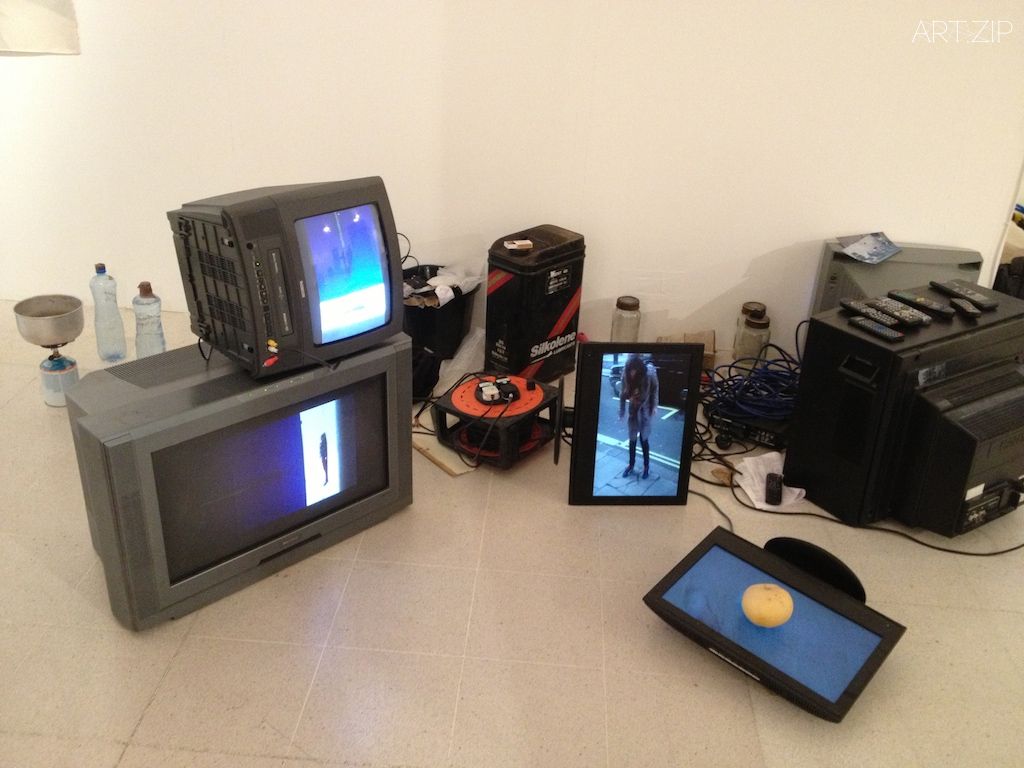 在啓程基金會工作的時候我認識了遍佈英國各地的朋友,在英格蘭東北部、約克郡、伯明翰和倫敦同時開展項目,運營空間和工作室。我遇到非常多優秀的藝術家,在甄選藝術家時,我們更多地在考量創作過程而非現成作品。同時我也意識到一個有趣的現象:如果藝術家早在開展前幾個月就進駐展覽空間進行創作,空間將以一種更有凝聚力的方式進行有機的自我策展。若把傳統策展比作工業化耕作,那它就是永續農業。我策劃的許多項目就是希望把空間打造成類似藝術學院內的集體工作室,而不僅僅是一個畫廊。
在啓程基金會工作的時候我認識了遍佈英國各地的朋友,在英格蘭東北部、約克郡、伯明翰和倫敦同時開展項目,運營空間和工作室。我遇到非常多優秀的藝術家,在甄選藝術家時,我們更多地在考量創作過程而非現成作品。同時我也意識到一個有趣的現象:如果藝術家早在開展前幾個月就進駐展覽空間進行創作,空間將以一種更有凝聚力的方式進行有機的自我策展。若把傳統策展比作工業化耕作,那它就是永續農業。我策劃的許多項目就是希望把空間打造成類似藝術學院內的集體工作室,而不僅僅是一個畫廊。
從牛津到倫敦
浮島畫廊是在一點一滴堆砌而成的。我不想離開校園,我在拉斯金學院(Ruskin College)完成了我的本科學位,它隸屬牛津大學,學院不大卻人才濟濟。在這個氣氛活躍的校園裡,我有幸遇見了許多出色的老師,包括邁克爾·阿切爾(Michael Archer)、布萊恩·凱特琳(Brian Catling)和理查德·文特沃斯(Richard Wentworth)。畢業前,藝術經紀安妮·伯紹德(Anne Berthoud)組織了一次為期一月的摩洛哥駐地項目;在那之後我和同學們帶著憧憬來到倫敦闖蕩,但迎來的卻是昂貴又陌生的大都市和隨之而來的生活窘迫。
嘗試過一次次前景渺茫的銷售工作,也走訪過托特納姆黑爾就業中心(Tottenham Hale Job Centre),最後在朋友尼拉·巴蘇的引薦下,我得到了一份機會難得的工作——在達明·赫斯特(Damien Hirst)的蝴蝶拼貼工作室的從事制作。接下來的幾年碩果累累,我在那結識了很多才華橫溢的年輕藝術家,我們交流經驗、分享想法、舉辦展覽,其中很瘋狂的一個是在即將拆除的倉庫內舉辦了一次名為《落錘式破碎機(Wrecking Ball)》的活動。我們也常受邀出席許多藝術聚會,我們還一起到洛杉磯高古軒畫廊(Gagosian Gallery)出席赫斯特的大型個展開幕式。但是漸漸地,我意識到這份工作不是長久之計,我一直都在機械地日復一日地貼蝴蝶翅膀。我開始上夜校攻讀文化與批判研究的碩士課程,同時在啓程畫廊找到了工作,也就是現在的啓程基金會,它是由羅伯特·沃特(Robert Wort)和賈爾斯·安德魯斯(Giles Andrews)成立的新組織,目的是幫助新興藝術家,為他們提供免費的場地和資源。
我早期策劃的展覽大約在2009到2010年之間,當時在希思羅機場的一系列倉庫裡策劃了好些項目,許多嶄露鋒芒的藝術家都參加了,包括愛德華·弗尼勒斯(Edward Fornieles)、斯圖爾特·高夫(Stewart Gough)、伊洛娜·塞格爾(Ilona Sagar)、勞埃德公司(The Lloyd Corporation)、道格·瓊斯(Doug Jones)、海倫·卡贊(Helene Kazan)、保羅·伊修絲(Paul Eachus)、布盧·科理(Blue Curry)、海倫·巴爾夫(Helen Barff)、查爾斯沃思(Charlesworth)、萊萬多夫斯基和曼(Lewandowski & Mann)。盡管場地偏遠,但據統計至少有幾千名觀眾出席了開幕式。其中一個展覽《根莖(Rhizomatic)》很是讓我驚訝,展覽空間足有64000平方英尺,參展藝術家超過了200人,我們用數學遊戲“小世界現象(six degrees of separation)”來通過合作過的藝術家再邀請新的藝術家參與,實實在在地建立了龐大的人際網絡。
另類畫廊,另類學院
在一個偶然的契機,我決定著手進行最重要的項目——浮島畫廊。這要歸功於金匠學院(Goldsmiths College)建築研究碩士課程的年度展覽,這是一次合作的策展項目。一處宏偉的臨水展覽場地,就位於金絲雀碼頭那未來主義風格的摩天大樓和附庸風雅卻略顯粗糙的東南部街道之間。2014年,我以合理的價格租下那裡以及鄰近物業,浮島畫廊誕生了。
畫廊以“浮島”為名有好幾個原因:第一是因為我喜歡羅伯特·史密森(Robert Smithson)的作品:一艘船拖曳著人造漂浮島環繞曼哈頓航行;其二,我很喜愛的法式甜點叫做“浮島(île flottante)”;第三,我喜歡哲學家吉爾·德勒茲(Gilles Deleuze)的文集《荒島(Desert Islands)》;第四,畫廊所在地就在米爾沃爾碼頭(Millwall Dock)的人工島上。正如詩人約翰·多恩(John Donne)所言:“沒有人是一座孤島”,我自己並不希望成為孤島;盡管數字時代下溝通無阻,但定居倫敦、又是藝術家的我很容易成為孤軍作戰的一個人。因此我覺得實體空間能夠切實把大家聚集在一起共同奮鬥。
浮島畫廊創立之前,我正巧從皇家藝術學院(Royal College of Art)退學,那裡高昂的學費實在壓得我喘不過氣來。總體來說我對課程比較失望,和啓程基金會的項目還有2010年我與朋友創辦的 “altMFA”(另類碩士課程)相比,課程內容實在太匱乏了。所以我不打算為了這門學業而負債累累--負債剝奪自由。我憧憬的是一個自由創作,藝術家互相交流的平臺。在我離開前,我給校長發了封郵件並抄送了全體學生和教職人員,信中我表達了對於院校日益商業化和官僚化的憂慮,我還在結尾處聲明:“出色的藝術學院應該是一個包容各類型人才的地方,那裡的人不僅有才智,也嚴謹,還需要有熱情,勇於挑戰,活在當下。”我清楚地知道要實現上述想法非常不易,更不用說像皇家藝術學院這種規模的院校了,但這正是我成立浮島的理由:它不只是一間畫廊,而是一個融合了思考、遊玩、分享、隱藏、展示、學習、摸索、失敗、成功、聚集的空間。
撇開這些不滿,我在求學期間還是有一些激動人心的事值得分享。畢業展覽期間,我們一行人在雕塑大樓前搭建了一間小木屋,裡面的空間展示了一件共同創作的裝置。這個項目源於“分享午餐”這個簡單的概念,進而演變成“分享理念:團結、邊界、家庭生活、時間、空間、交換、關懷、政治、制作方式還有生活方式……”“造房子”變成了分享交流,抵制畢業展覽個人化的一種方式。浮島畫廊的概念最初就是從這裡發展而來的,然後再利用我的其他實踐經驗來打造這個千頭萬緒的變形者,藝術也是如此,轉瞬即逝,難以捉摸,無法定義。藝術又像是一項個人運動,但你不能脫離別人而存在,藝術沒有目標,只有不斷嘗試。浮島畫廊就是一個一起嘗新、一起玩的遊樂場。
Quotation:
I think curator has become some sort of artist in a way, and the artists now illustrate the vision of the curator, so the artists become a material, in some way, it feels like that. But I don’t want to do that. I’m more interested in making my own work. I don’t like the thought of controlling from the top. I prefer to curate situations where people can make decisions together and become a community. It’s quite likes some sort of Utopian, maybe a bit cheesy, but it’s nice to create a shared space that discussion can happen. It’s more like an art school, or a situation, the space curates itself, with conversations, interactions between different objects or works.
我覺得有時候策展人在某種程度上把自己變成當成藝術家了。有時候藝術家彷彿變成了一種被策展人利用的素材,幫助策展人把他的觀點具體化呈現給觀眾。我並不想變成那樣的策展人,我有自己的藝術創作,我不喜歡高高在上的控制一切,我更願意創造一種情境或環境,讓大家一起作決定,我們是一個平等的群體。這聽起來有點烏托邦,又或許聽起來有些空洞,但是創建一個可以讓討論發生的平台是我的志願。這更像是一所藝術學校,或者一個情境,空間能夠自我策展,不同的作品能夠互相對話。
Whenever I organize something, it’s almost like a party, a happening, or something live of an event, the people out there are part of that. It doesn’t always feel I curate the show, even if it has a scheduled performance. It feels like artists choose me rather than me choosing artists. I might find out about someone because someone else knows someone, or I saw their works there. It’s usually quite organic in the way the connections are made. I quite like that, it becomes a group of friends, like the 50s, 60s, 70s, people were in the warehouses, experimenting, making different kinds of performances and striving for utopia.
我策劃的展覽更像是一場派對,一個發生,或者一個活動現場,在這個場景裡的人很重要,他們是這個活動的重要組成部分,無論是觀眾還是藝術家。儘管有表演流程安排等等,但我覺得好像並不是我在策展,感覺像是藝術家挑選我多於我挑選藝術家。我可能會因為一位藝術家認識另外一位藝術家,或者是在朋友的活動上看到別的藝術家的作品從而認識新的藝術家。我喜歡這樣有機地搭建人際網絡,就像是50年代,60年代,甚至是70年代,藝術家之間都是朋友,聚首在倉庫裡一起實驗,一起嘗試各種各樣的行為表演,共同打造這樣美好的烏托邦。
I’m not commercially successful artist, I am more interested in giving artists a safe space to play, to make mistakes, to try out something new. It might not be the best of their works, but it’s a progress, a development, a practice. It’s not like going shopping at the degree show, picking someone’s good work, but to train them, to grow with them.
我不是商業上成功的藝術家,我更感興趣的是為藝術家提供一個安全的空間一起作樂,一起犯錯,一起嘗新。也許展出的成品算不上他們最好的作品,但是這個發展過程和實踐本身就是最值得鼓勵的。要是像去畢業展銷會挑好貨那就沒意思了,我更願意和這些尚在摸索的藝術家一起成長。
I think the best art is art adventure, artist is as much important as the viewer, if they are not surprised by their artwork, then they are not working hard enough, they are not scared enough, they should be scared of what’s going on.
我覺得會冒險的藝術才是好藝術,藝術家的感知和觀眾的是同等重要的,如果他們自己都不被自己的作品所震撼到,那麼他們還不夠努力,他們應該對未知保持一種恐懼感才能促使更好的發生。

